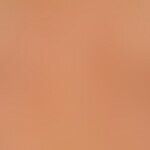Synonym(s)
HistoryThis section has been translated automatically.
Branch Vazaturov 1934
DefinitionThis section has been translated automatically.
Not uncommon isolated mononeuropathy (neuropathic pruritus form) of unexplained etiology localized circumscribed on the back.
You might also be interested in
EtiopathogenesisThis section has been translated automatically.
Damage to the primary branches of the rami posteriores of unknown cause. Mechanical irritation and damage due to traumatic or degenerative changes of the affected spinal segments are discussed. Pigmentation of the area is thought to be an irritant response to constant rubbing at this site. Friction amyloidosis is present in >10 of the cases.
ManifestationThis section has been translated automatically.
About 70% of those affected are women. The mean age of onset is 57 years (25-80 years).
LocalizationThis section has been translated automatically.
Above or between the shoulder blades (segment C7-Th6).
ClinicThis section has been translated automatically.
In studies with larger collectives, the symptoms of "localized pruritus of varying intensity" and a circumscribed, blurred, brown-grey patch of skin are described (probably caused reactively by rubbing and chafing of the affected areas). Furthermore, (less frequently) intermittent pain (30%), paraesthesia (28%) and hyperaesthesia (11%) are reported.
Radiologically, degenerative changes and/or nucleus pulposus hernias are found in the spinal column sections of the affected segments (most frequently Th4 and C7) in about 80% of patients.
HistologyThis section has been translated automatically.
In a larger study, single-cell necrosis was histologically evident in the epidermis in 71.4%, epidermal hyperpigmentation in 74.3%, and dermal hyperpigmentation in 80%.
Amyloid deposits in the papillary body were seen in 11.4% of patients. 5.7% of the patients did not show any of the mentioned histological features (see also Friction Amyloidosis ; see below Cutaneous Amyloidosis).
The number of peripheral nerves is significantly reduced in lesional skin.
Differential diagnosisThis section has been translated automatically.
TherapyThis section has been translated automatically.
The best results are achieved with 0.025-0.05% capsaicin ointment (e.g. Dolenon, Capsamol) 3-5x/day over a treatment period of several months. The application of capsaicin causes local burning and itching at first (patient education!).
Improvements can also be achieved with local anesthetic creams (e.g. EMLA cream).
Treatments with antipruriginous substances such as camphor or menthol (Pruricalm®) can be tried.
In other collectives, success has been achieved with anticonvulsants (e.g., gabapentin).
Progression/forecastThis section has been translated automatically.
Note(s)This section has been translated automatically.
The term is derived from the Greek (noton=back - algie=pain).
LiteratureThis section has been translated automatically.
- Astwazaturow M (1934) On paresthetic neuralgia and a special form of it - notalgia paresthetica. Dt Z Nervenheilkd 133: 188-196.
- Cerroni L et al (1993) Notalgia paresthetica, "posterior pigmented pruritic patch" and macular amyloidosis. Three stages of a disease. Dermatologist 44: 777-780
- Huesmann T et al. (2012) Notalgia paraesthetica: a descriptive two-cohort study of 65 patients from Brazil and Germany. Acta Derm Venereol 92:535-540
- Inaloz HS et al (2002) Notalgia paresthetica with a significant increase in the number of intradermal nerves. J Dermatol 29: 739-743
- Layton AM et al (1991) Notalgia paraesthetica - report of three cases and their treatment. Clin Exp Dermatol 16: 197-198
- Leibsohn E (1992) Treatment of notalgia paresthetica with capsaicin. Cutis 49: 335-336
- Metz M et al (2011) Treatment of notalgia paraesthetica with an 8% capsaicin patch. Br J Dermatol 165:1359-1361.
- Savk O et al (2005) Investigation of spinal pathology in notalgia paresthetica. J Am Acad Dermatol 52:1085-1087.
- Savk E et al (2002) Immunohistochemical findings in notalgia paresthetica. Dermatology 204: 88-93
- Savk E et al (2000) Notalgia paresthetica: a study on pathogenesis. Int J Dermatol 39: 754-759.
Venkataram MN et al (2001) Frictional amyloidosis: a study of 10 cases. Australas J Dermatol 42:176-179.
Incoming links (9)
Amyloidosis macular cutaneous; Brachioradial pruritus; Frictional amyloidosis; Hereditary localized pruritus; MEN 3; Menthol solution 1%; Meralgia paraesthetica; Peculiar spotty pigmentation; Puzzling posterior pigmented pruritic patches;Outgoing links (10)
Amyloidosis macular cutaneous; Cutaneous amyloidosis (overview); Frictional amyloidosis; Gabapentin; Hyperpigmentation postinflammatory; Leprosy (overview); Lichen amyloidosis; Lichen simplex chronicus; Menthol; Rem syndrome;Disclaimer
Please ask your physician for a reliable diagnosis. This website is only meant as a reference.








